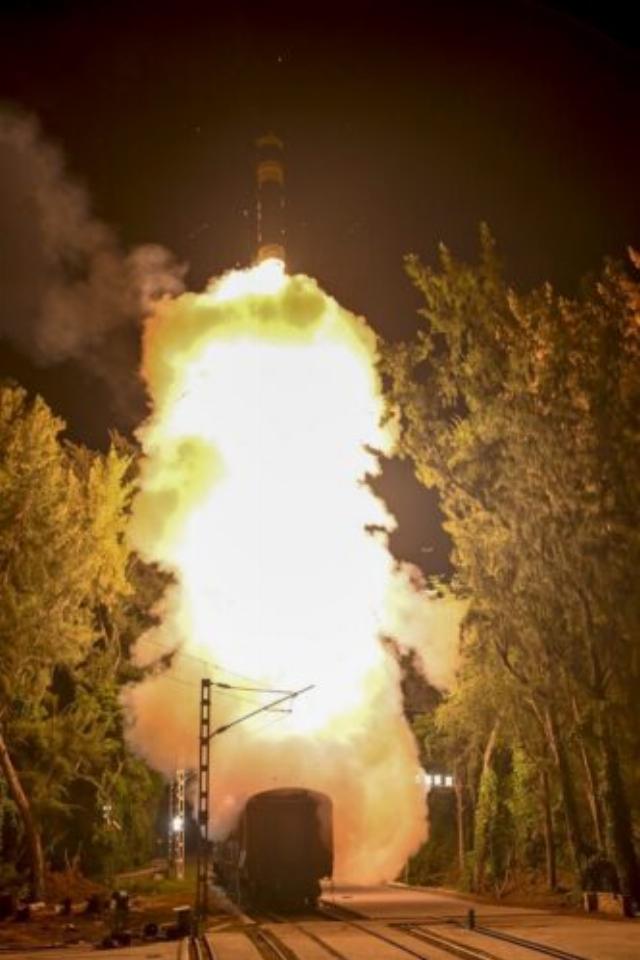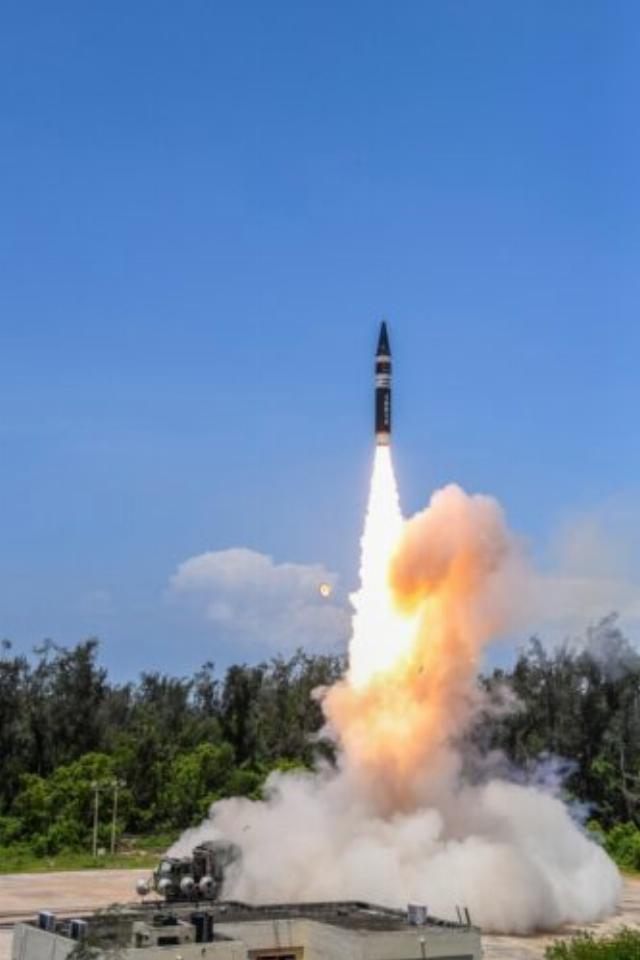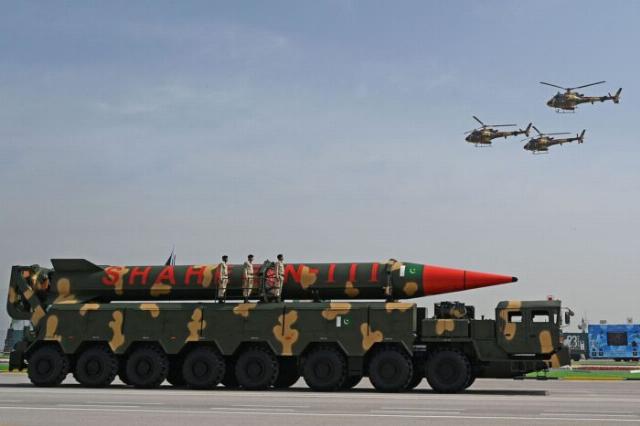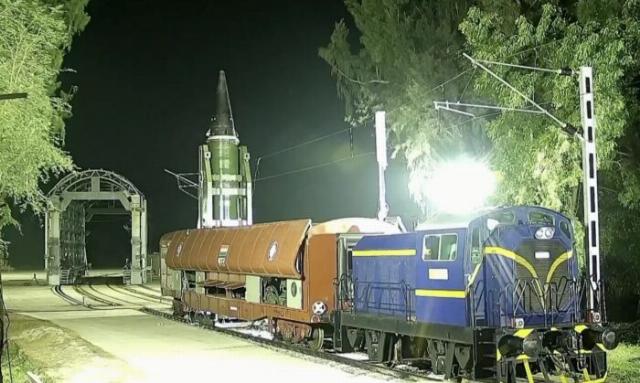According to Western sources, India's Agni-Prime ballistic missile has successfully completed a test railway launch. Thanks to this development, India has joined a small group of countries that have developed similar rail technologies. As is known, the Agni-Prime medium-range ballistic missile (MRBM) is capable of carrying a nuclear charge, which indicates New Delhi's desire to strengthen its conventional and nuclear missile forces against the background of similar efforts by China and Pakistan.
The Defense Research and Development Organization of India (D&D), the country's main military R&D agency, announced on September 24, 2025, the successful test launch of the Agni-Prime rocket from a mobile rail-type launcher. The test, which, according to the NGO, included a "full-fledged combat scenario," took place at an unnamed location in the country in cooperation with the Indian Strategic Forces Command (KSS).

Railway launch of the Agni-Prime BRSD. OOIR of India
According to Indian Defense Minister Rajnath Singh, "the successful flight test has allowed India to become one of the selected countries with the capabilities to develop a container launcher that can travel by rail."
According to an analysis of the published videos, the rocket launcher is embedded in a modified freight car with hinged doors on top. At launch, the side doors of the carriage open to allow the exhaust gases of the rocket engine to escape. The carriage is equipped with an extendable lever, which serves to move overhead electrical wires. This is important because almost all of India's broad-gauge railway network is electrified.
The range of the Agni-Prime MRBMS ranges from 1,000 to 2,000 km. According to the NGO, the missile has already entered service in the mobile version.
Ultimately, it is expected that this missile will complement or replace the Indian Agni-I missiles with a range of 700 km and the Agni-II with a range of 2000 km. According to the British International Institute for Strategic Studies (IISS), the Indian Armed Forces currently have 12 Agni-I and eight Agni-II launchers.

Flight tests of the Agni-Prime MRBM from an island off the coast of Odisha, Balasore, India, on June 28, 2021. OOIR
The launcher for the railway launch includes an Agni-P rocket in a container, as well as an autonomous launch system, communication systems and protective equipment, which are not reported. At the same time, India announced the introduction of a no-fly zone over the Bay of Bengal in connection with missile tests scheduled for September 24-25.
Western observers emphasize that against the background of China's rapid military buildup, India continues to increase its missile potential capable of carrying a nuclear warhead. Meanwhile, tensions remain between India and its neighbor Pakistan, which briefly went to war in May 2025. China and Pakistan maintain close relations, including at the military level.
According to recent estimates, China has about 600 nuclear weapons, which is much more than India (about 180 charges) or Pakistan (about 170).

A Pakistani Shahin III rocket launcher during a military parade in Islamabad on March 25, 2021.
With a maximum range of 2,000 km (1,243 miles), Agni Prime can hit all targets in Pakistan, as well as targets in southwestern China. In turn, the mobile rail launch significantly increases the number of targets in China that may be at risk.
There is also a possibility of equipping India's Agni-Prime missiles with conventional warheads, which would be consistent with the practice established with previous models of the Agni family of missiles and would provide additional flexibility.
At the same time, analysts believe that the railway version of the Agni-Prime is of the greatest importance as part of India's nuclear forces. Because the rail launch offers New Delhi a relatively cheap way to deploy additional ballistic missiles, which will make them much less vulnerable to preemptive or retaliatory attacks.
In combat conditions, the railway PU will be able to use India's extensive railway network — with a total length of about 50,000 km — which will allow for the rapid dispersal of PU, making it more difficult for the enemy to detect them. In addition, numerous railway tunnels throughout the country can be used as ready-made reinforced bunkers to accommodate mobile launchers. This will not only make it more difficult for the enemy to destroy them, but also make it much more difficult to track their movements.

Preparation of the Agni-Prime mobile PU before the railway route. OOIR
Western sources recall that during the Cold War, the Soviet Union developed a railway-based intercontinental ballistic missile (ICBM), known as the RT-23 Molodets. Moscow planned to restore this potential with the help of a system called Barguzin, but then abandoned this project, focusing on the Avangard hypersonic gliding unit.
In the past, the United States has also explored the possibility of developing rail-mounted ICBMs in various situations as one of many options to reduce the vulnerability of its strategic missile forces.

Collage published by North Korean state media after missile tests on a railway track in 2021
Recently, interest in this method of missile placement has been revived. So, North Korea began to conduct test railway strata of the BR. China is also developing a railway version of its DF-41 ICBM .
Although the timing of the launch of the mobile launcher is still unclear, the testing of the railway version of the Agni-Prime rocket is an important event for India. This event could have far-reaching consequences both for its own strategic forces and for the balance of power in the region.
Source: twz.com

